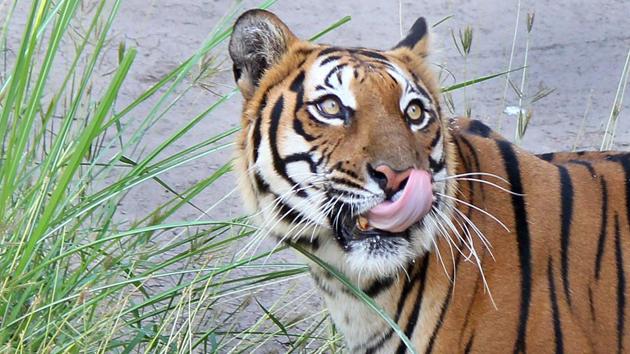Tiger numbers can increase even with human cohabitation
The application by nine academics was submitted to the Supreme Court in July as part of a petition seeking proper implementation of the Forest Rights Act, 2006 (FRA).
As the latest tiger census shows a 33% rise in the big cat’s population in India, an application filed before the Supreme Court claims that the number of tigers can increase even when communities share forest space with them and this is clearly evident in Karnataka’s Biligiriranga Temple Sanctuary or the BRT Tiger Reserve.

The application by nine academics was submitted to the Supreme Court in July as part of a petition seeking proper implementation of the Forest Rights Act, 2006 (FRA).
The BRT sanctuary is home to Soligas, an indigenous tribe of Karnataka. In May 2014, three years after the government declared the sanctuary a tiger reserve, the Soligas made history by becoming the first tribe living inside a tiger habitat to get their forest rights recognised by a court.
A judicial magistrate’s court in Chamrajnagar upheld their community rights, including the crucial forest conservation and management right among others.
In the BRT reserve, the number of big cats nearly doubled from 35 to 68 between 2010 and 2014, says the application. Now, Karnataka Project Tiger officials are expecting a rise in tiger numbers in the 2018 census when the reserve-wise break-up is released next month. According to the census released on July 29, India now has 2,967 tigers, or seven out of every 10 big cats in the wild in the world.
“Numbers are bound to rise in BRT too because we have recorded a good increase in the state from 408 in 2014 to 524 in 2018. The increase cannot be limited to Bandipur and Nagarhole reserves,” said T Balachandra, conservator of forests and field director, Project Tiger.
Sharachchandra Lele, fellow in Environmental Policy & Governance at Ashoka Trust for Ecology, and one of the applicants, said they have referred to BRT sanctuary as evidence of co-existence with wildlife and to show that harvesting of non-timber forest produce doesn’t degrade the quality of forests. “There is ample evidence that co-existence in wildlife-rich areas is possible. For instance, in BRT Sanctuary and Tiger Reserve, Karnataka, tiger numbers have actually gone up even as Soliga tribals have continued to live in and use the forest,” the application says.
P Shankar, director of BRT sanctuary, said tribals and the forest department are on the same page when it comes to conservation. About 5,000 tribals live inside the reserve, spread over 575 sq km.
“Soliga tribals prefer living inside the reserve even if there are employment opportunities outside. They participate in forestry activities and anti-poaching camps. There is no tiger-human conflict inside the reserve...,” said Shankar.
The top court is yet to hear the application filed by Lele, historian Ramchandra Guha, wildlife biologist from Indian Institute of Science, R Sukumar among others.
“Not many people are aware that the forests of BRT were once ravaged by extensive slash and burn cultivation, which was stopped only after it was notified as a Sanctuary in 1974. Subsequently, logging was also halted. Empowered under the Wildlife Act, forest officers then cracked down on rampant hunting and timber smuggling networks that were operating with impunity. It was these long-term efforts, under the so-called ‘draconian’ conservation laws, which actually led to the recovery of tigers and their prey in BRT,” said Praveen Bhargav, petitioner in SC challenging FRA and former member of National Board for Wildlife.






